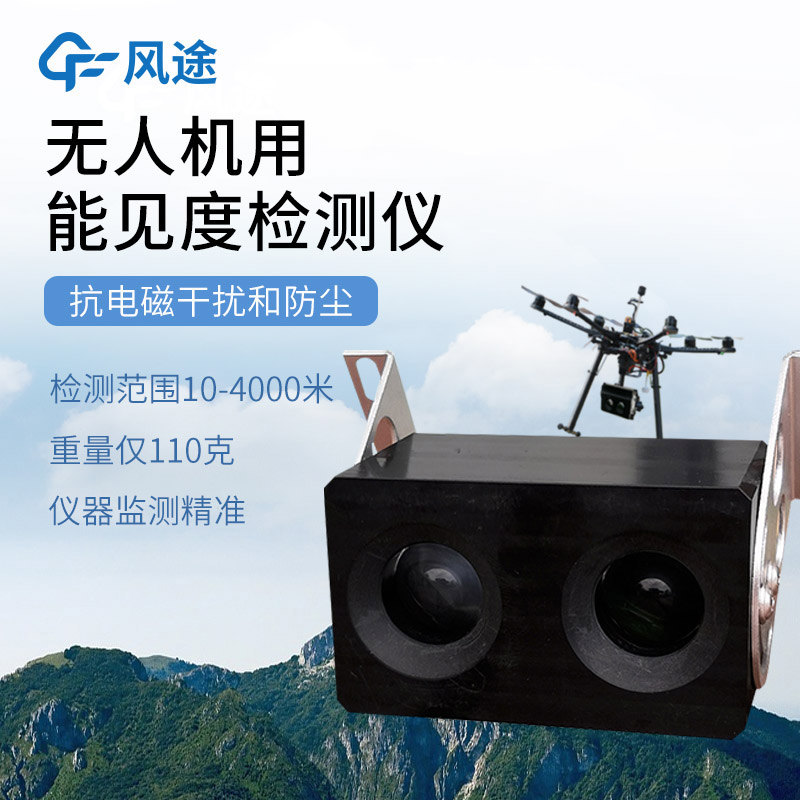Shandong Fengtu IOT Technology Co., Ltd
Sales Manager:Ms. Emily Wang
Cel,Whatsapp,Wechat:+86 15898932201
Email:info@fengtutec.com
Add:No. 155 Optoelectronic Industry Accelerator, Gaoxin District, Weifang, Shandong, China

Sales Manager:Ms. Emily Wang
Cel,Whatsapp,Wechat:+86 15898932201
Email:info@fengtutec.com
Add:No. 155 Optoelectronic Industry Accelerator, Gaoxin District, Weifang, Shandong, China
time:2025-06-11 09:42:08 source:Weather Station viewed:154 time
Traditional visibility detection equipment is often limited by fixed installation positions, posing many inconveniences for visibility monitoring in complex terrains, large-area regions, and special mission environments. However, UAVs (unmanned aerial vehicles) offer unique advantages such as flexibility, rapid response, and wide coverage, enabling them to access areas difficult for traditional equipment, such as mountainous regions, above rivers, and around large event venues. By mounting a visibility sensor on a UAV, real-time dynamic monitoring of visibility in specific areas can be achieved, providing more precise and timely data support for industries like meteorological forecasting, traffic management, and environmental monitoring, thus effectively enhancing the scientificity and accuracy of related decision-making.
This 6KM forward-scattering visibility sensor applied to UAVs has a wide detection range, covering 10 to 6,000 meters, with a maximum detection distance of 10,000 meters, meeting the visibility monitoring needs of different scenarios.
The detector operates based on the forward-scattering principle. The forward-scattering principle refers to the phenomenon where light, during its propagation in the atmosphere, encounters obstacles such as aerosol particles and water droplets, causing scattering, with part of the light scattering forward. The detector emits light of a specific wavelength, receives the forward-scattered light signal, and combines it with advanced algorithm models to analyze and calculate parameters such as the intensity and angle of the scattered light, thereby accurately deriving visibility values. This principle allows the detector to operate stably under various weather conditions, effectively resisting external interference, ensuring data reliability and accuracy, and providing a solid guarantee for UAV flights in complex environments and visibility monitoring tasks in related fields.

The combination of carbon fiber support and portable design has brought about performance improvements for the Portable Meteorograph. In the field of outdoor meteorological monitoring, the stability, durability, and portability of equipment directly affect the accuracy of monitoring data and operati...
Visibility, defined as the maximum horizontal distance at which a normal-sighted person can distinguish a target from its background, is a critical parameter in meteorology, transportation, environmental protection, and national defense.Early visibility measurements mainly relied on visual observati...
In the modern meteorological monitoring system, the Visibility sensor has achieved functional expansion and upgrade. It can not only accurately monitor visibility but also identify various weather phenomena, so it is called a visibility weather phenomenon instrument.This instrument is mainly based o...
On the rooftops of distributed photovoltaic power stations and between small photovoltaic arrays, a compact and sophisticated monitoring device is often seen – this is the PV Weather Station. With its small size, flexible deployment, and precise monitoring capabilities, it provides reliable data fo...